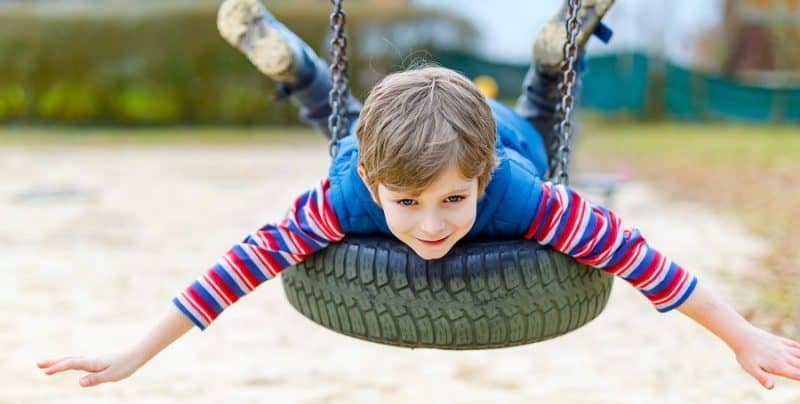Children under 14 suffer playground-related head injuries at an alarming rate, according to a recent study.
In the most exhaustive examination since 1999, the Centers for Disease Control found about 35 out of every 100,000 children who visit a playground fall and suffer a head injury, and the injury rate among children between 5 and 9 was almost twice as high. Furthermore, only about 4 percent of these victims are treated for head injuries, a statistic which probably reflects the difficulty in diagnosing these wounds. Falls from monkey bars and other climbing equipment were the most frequently reported cause.
The number of other injuries, such as strangulation, concerned researchers as well; for example, smaller children with drawstring hoodies often became entangled in playground equipment.
The Most Dangerous Playgrounds cause injuries
Older equipment that’s built on top of a solid surface, such as concrete or bare ground, is especially hazardous, because of the hard falls. Equipment that’s built over sand or gravel is not quite as dangerous. Ideally, the playground floor should be covered with wood chips, shredded rubber, or other shock absorbing materials.
Another concern is that children often play on age-inappropriate equipment. That fact probably explains the higher injury rate among younger children.
Many school playgrounds in older and more well-established neighborhoods are little more than a few slides, swingsets, and monkey bars erected in a grassy area. Moreover, many of these schools have one playground for all ages of children, as opposed to separate areas for older and younger kids.
Head Injury Basics
Almost 1.4 million Americans per year visit hospital emergency rooms suffering from Traumatic Brain Injuries, and an unknown number of people — perhaps two or even three times that amount — sustain these wounds yet do not seek treatment.
Some injuries are immediately apparent, because for example, we all know straightaway if we break a bone. But TBIs are different, partially because there are no uniform symptoms. Some victims completely lose consciousness while others are in a semi-conscious state. Moreover, the brain is extremely adept at concealing its own injuries. That’s the reason concussed athletes often tell their coaches that they “feel fine” and therefore can re-enter the game.
TBIs are usually degenerative, and they very quickly progress through three basic phases:
- Early Onset: As mentioned earlier, some people completely lose consciousness and others do not. The extent of unconsciousness often determines the extent of the brain injury, because the longer the brain goes without an optimal oxygen supply, the more bodily functions shut down.
- Mid Term: After a few days without proper treatment, many victims have trouble sleeping, persistent serious headaches, tinnitus (ringing in the ears), difficulty concentrating, and other symptoms which make it almost impossible to function normally during the day.
- Late Term: Eventually, victims deal with loss of function and dementia-like symptoms.
Although there are some emerging treatments that show significant promise, TBIs are incurable by medical science at this point in time, and they will probably remain incurable for the foreseeable future.
Legal Issues
To determine the property owner’s legal duty in these cases, most states still use a variation of the common law classification system that split victims into invitees, licensees, and trespassers. However, these divisions are archaic and overlapping. So, a number of years ago, New York abandoned this distinction. Now a blanket duty of care applies to all situations involving playground injuries, dog bites, swimming pool drownings, slip and falls, and other land owner liability injuries.
The duty of care is not the same in every situation, and is largely based on:
- Likelihood of Injury: Some playgrounds are more dangerous than others, so the duty is higher in some places.
- Seriousness of Injury: TBIs are among the most serious and life-threatening kinds of personal injuries. If the possible injuries are not as severe, the duty of care is commensurately lower.
- Burden of Avoiding Risk: It is relatively easy to scatter shock absorbing material on a playground floor, just like it is relatively easy to fix a loose gate latch, replace a burned out bulb, or wipe up a wet spot on the floor.
In all these cases, the possible injury must also be foreseeable. This issue often comes up in third party crimes, such as barroom fights and armed robberies.
Damages in landowner liability cases usually include compensation for tangible losses, such as medical bills, as well as intangible losses, such as pain and suffering. In some extreme negligence cases, additional punitive damages may be available as well.
Unsafe playgrounds are all over the Empire State, putting kids at risk. For a free consultation with an experienced personal injury lawyer in New York, contact Napoli Shkolnik PLLC. Home and hospital visits are available.
